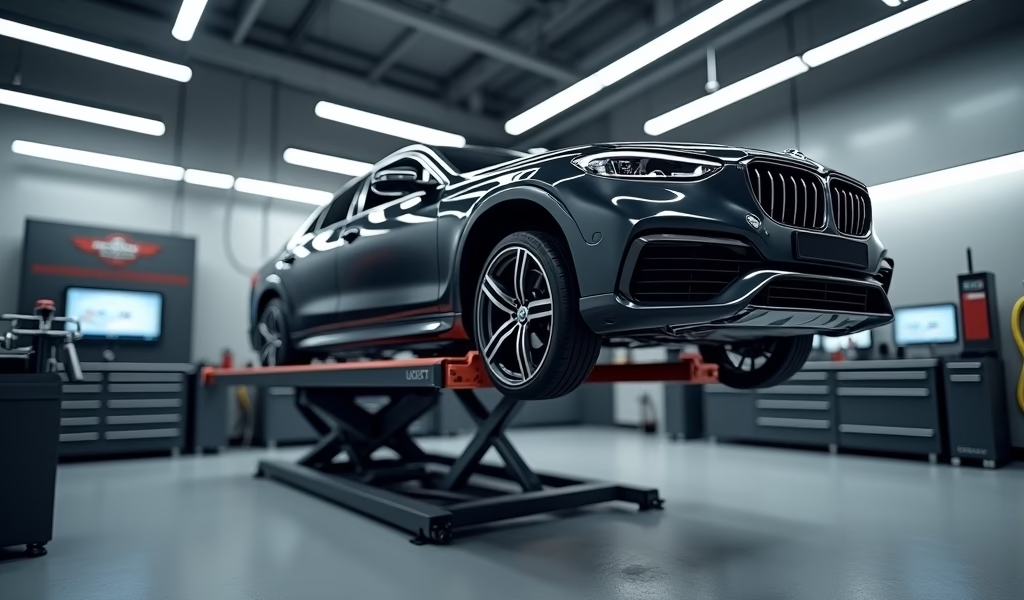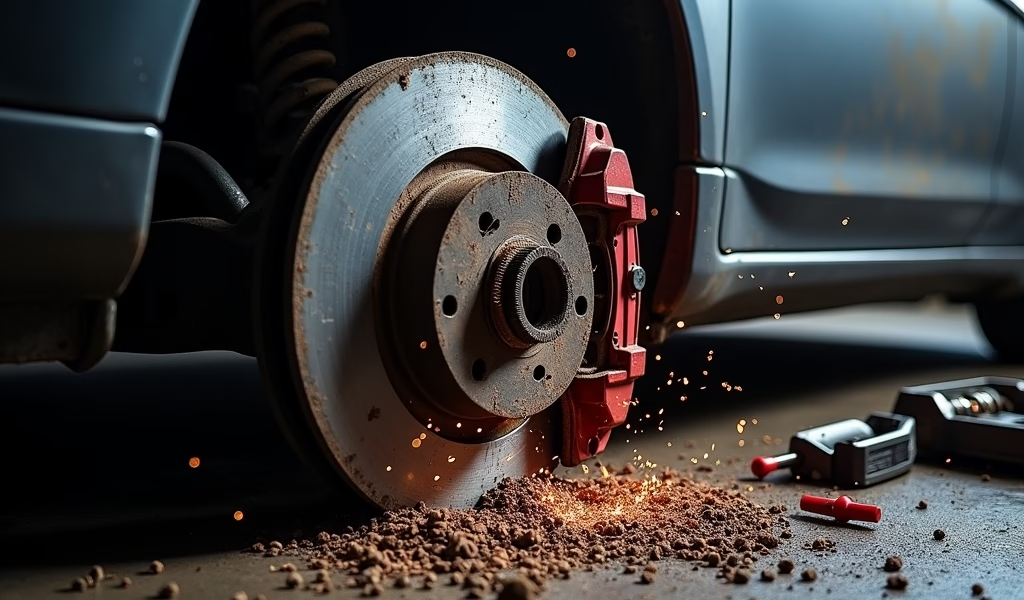Overview
This article provides an in-depth guide to brake pad replacement costs, ranging from $150-$300 per axle at professional shops or $30-$150 for DIY parts, with detailed explanations of pad types, warning signs for replacement, and money-saving strategies. It emphasizes that while cost is important, drivers should prioritize safety by choosing appropriate pads for their driving style, performing timely replacements, and adopting driving habits that extend pad life.
Table of Contents
- Understanding Brake Pad Costs: What You’re Really Paying For
- Average Costs Breakdown: From Budget to Premium
- Pro Tip #1: Choose the Right Brake Pads for Your Driving Style
- Pro Tip #2: DIY vs. Professional Replacement – What Makes Sense?
- Pro Tip #3: Warning Signs You Need New Brake Pads Now
- Pro Tip #4: Extend Your Brake Pad Life with These Habits
- Pro Tip #5: Shop Smart and Save on Quality Parts
- Conclusion: Making the Smart Brake Investment
- Frequently Asked Questions
Understanding Brake Pad Costs: What You’re Really Paying For
Let’s cut to the chase—the cost to replace brake pads isn’t just about slapping new friction material on your rotors and calling it a day. As someone who’s been elbow-deep in brake dust for over 15 years, I can tell you that what you’re really paying for is your safety on the road. Every time you press that brake pedal, you’re putting your trust in those little pads to bring several thousand pounds of metal to a stop.
The typical brake pad replacement cost ranges from $150 to $300 per axle when you go to a shop. But here’s where it gets interesting—DIY warriors can slash that in half by tackling the job themselves. Are you someone who’s comfortable wielding a wrench? Because the parts alone typically run between $30 and $150, depending on whether you’re shopping for bargain-bin specials or premium ceramic pads.
But before you decide to pinch pennies or splurge on the fancy stuff, let’s understand what factors are driving these costs in the first place. Because knowing where your money is going is the first step to making sure you’re not getting taken for a ride.
Average Costs Breakdown: From Budget to Premium
When it comes to the cost to replace brake pads, you’ll encounter a variety of price points that might make your head spin faster than a poorly balanced rotor. Let me break it down in a way that makes sense:
- Economy/Organic Pads: $30-$50 per axle (parts only)
- Semi-Metallic Pads: $50-$80 per axle (parts only)
- Ceramic Pads: $70-$150+ per axle (parts only)
- Labor Costs: $80-$150 per axle at most shops
What’s the difference? Economy pads will stop your car—until they don’t. They wear quickly and produce more dust than a vacuum cleaner convention. Semi-metallic pads offer better performance and longevity, making them the Honda Civic of brake pads—reliable, middle-of-the-road options that won’t let you down. Ceramic pads are the luxury option—they’re quieter, cleaner, and last longer, but you’ll pay a premium for these perks.
Keep in mind that these prices can vary wildly depending on your vehicle. That sporty European sedan you love so much? Expect to pay up to 40% more for the same brake service compared to a domestic economy car. It’s not price gouging—it’s the reality of specialized parts and sometimes more complex labor.
According to Consumer Reports, most drivers should expect to replace their brake pads every 30,000 to 70,000 miles. That’s quite a range! Your mileage will literally vary based on your driving habits, which brings us to our first pro tip.

Pro Tip #1: Choose the Right Brake Pads for Your Driving Style
Here’s something the average parts counter person won’t tell you: matching your brake pads to how you actually drive can save you hundreds over the life of your vehicle. Are you a lead-footed city driver who treats every yellow light like a personal challenge? Or more of a highway cruiser who rarely sees heavy traffic?
For city drivers who are constantly riding their brakes in stop-and-go traffic, ceramic pads make financial sense despite their higher upfront cost. They’ll last longer in these conditions and won’t coat your fancy wheels with that unsightly black dust that screams “I’ve neglected washing my car for months!”
Highway warriors can often get away with semi-metallic pads, which offer excellent heat dissipation during those occasional hard stops from higher speeds. The money you save can go toward your gas budget instead.
For the weekend warrior who occasionally takes their vehicle to track days or spirited mountain drives, performance pads might be worth considering. Yes, they’re pricier and might squeal a bit during normal driving, but they won’t fade when you’re really pushing the limits.
Want to know my secret recipe for the perfect balance? Keep two sets of pads if you’re a mixed driver. Use the premium ones when you know you’ll be putting stress on the braking system, and economical ones for regular commuting. It’s like having both work boots and dress shoes—each has its purpose.
Ready to get your hands dirty? Let’s talk about whether DIY brake jobs are really worth the savings.
Pro Tip #2: DIY vs. Professional Replacement – What Makes Sense?
Let me be straight with you—replacing brake pads yourself can save you around $100-$200 per axle. That’s real money you could put toward a nice dinner out or that fishing gear you’ve been eyeing. But before you rush to grab your socket set, let’s have an honest chat about whether DIY is right for you.
First, do you have the tools? You’ll need at minimum:
- Jack and jack stands (never, EVER rely solely on a jack)
- Lug wrench
- C-clamp or brake caliper tool
- Socket set and wrenches
- Brake cleaner spray
If you’re starting from scratch, buying these tools might eat into your savings on this first job—but they’ll pay for themselves over time with future DIY projects.
Second, do you have the confidence? Brakes aren’t like changing a lightbulb—they’re what stop your two-ton vehicle from plowing through that crosswalk. If you’ve never turned a wrench before, maybe start with something less safety-critical, like changing your air filter.
That said, brake replacement is one of the more approachable DIY jobs. Even as a professional, I’m amazed at how straightforward the process is on most vehicles. A Saturday afternoon, some patience, and a good YouTube tutorial specific to your vehicle model can have you feeling like a garage hero.
If you do go the DIY route, here’s my non-negotiable advice: always replace brake pads by the axle (both front wheels or both rear wheels at the same time), and always check your rotors while you’re in there. Uneven rotor wear can negate the benefits of your brand new pads faster than you can say “why is my steering wheel shaking?”
Not ready to DIY? No shame in that game. Just arm yourself with knowledge before heading to the shop so you don’t end up paying for services you don’t need. Speaking of which, how do you know when you actually need new pads in the first place?
Pro Tip #3: Warning Signs You Need New Brake Pads Now
You don’t need to be a mechanic to know when your brake pads are screaming for replacement—sometimes quite literally. Here are the telltale signs that you should be thinking about the cost to replace brake pads rather than the cost of collision repair:
- The screech of doom: That high-pitched squealing noise isn’t your car attempting to sing opera. Modern brake pads come with wear indicators—small metal tabs that contact your rotor when pad material gets low, creating that delightful sound designed to annoy you into action.
- The brake pedal vibration dance: If your brake pedal feels like it’s auditioning for a percussion band when you press it, your rotors might be warped—often a side effect of worn pads generating excessive heat.
- The disappearing brake pedal: If you find yourself pushing the brake pedal closer to the floor than usual, your pads may be worn to the point where they need more pedal travel to engage.
- The warning light illumination: Many modern vehicles have brake wear sensors that will trigger a dashboard light when it’s time for new pads.
- The “more than 3mm” rule: If you can visually inspect your brake pads through the wheel spokes and they look thinner than 3mm, it’s shopping time.
Here’s a pro secret that could save you serious cash: don’t wait until you hear metal-on-metal grinding. At that point, you’ve gone beyond needing new pads—you’re looking at rotor replacement too, which can double or triple your brake job cost. According to research from AAA, driving with completely worn brake pads can add $250-400 to your repair bill.
Remember, your braking system is like a chain—only as strong as its weakest link. Ignoring early warning signs doesn’t just hit your wallet; it compromises your safety and the safety of everyone sharing the road with you.
Now that you know when to replace them, let’s talk about how to make them last longer in the first place.

Pro Tip #4: Extend Your Brake Pad Life with These Habits
Want to stretch the time between thinking about the cost to replace brake pads? I’ve got some driving habits that can literally save you hundreds over the life of your vehicle.
First off, embrace the art of coasting. See a red light ahead? Take your foot off the gas early and let the vehicle naturally slow down before applying brakes. This isn’t just easy on your pads; it’s also a fuel-saving technique that the hypermilers swear by. Two birds, one stone!
Second, lighten your load. Your car isn’t a mobile storage unit. Each extra 100 pounds decreases fuel efficiency by about 1% and increases brake wear proportionally. Clean out that trunk full of “just in case” items you’ve been hauling around since 2019.
Third—and this one’s crucial—break the habit of riding your brakes on downhill stretches. That constant friction generates heat, and heat is the arch-nemesis of brake pad longevity. Instead, shift to a lower gear (yes, even in automatics) and let engine braking do some of the work.
Finally, give your vehicle regular brake flushes every 2-3 years. Fresh brake fluid prevents corrosion within the system and maintains proper braking performance. As MotorTrend explains, brake fluid is hygroscopic, meaning it absorbs moisture over time, which can lead to decreased braking efficiency and component damage.
By adopting these habits, you might extend your brake pad life by 20-30%—turning a 30,000-mile replacement interval into closer to 40,000 miles. That’s potentially one fewer brake job during your ownership of the vehicle.
Now, let’s talk about how to shop smart when the inevitable replacement time does arrive.
Pro Tip #5: Shop Smart and Save on Quality Parts
When it comes time to fork over cash for new brake pads, being a savvy shopper can save you significant money without compromising safety. Here’s how to navigate the marketplace like a pro:
First, don’t automatically assume the dealership is out to fleece you. While they typically charge premium rates, some offer competitive brake service specials that bundle parts and labor—especially during slower seasons. Sign up for your dealer’s email list and watch for these promotions.
For DIYers, consider buying online from reputable parts retailers rather than walking into the local auto parts store. Sites like RockAuto often offer the same brand-name parts at 20-40% less than brick-and-mortar stores. Just be sure to order well before your pads wear down to metal—nobody wants to wait for shipping while driving on dangerous brakes.
When comparing brake pad options, look beyond just price. The cheapest pads might cost you $30 now but need replacement in 20,000 miles, while $60 pads that last 40,000 miles are actually the better value. This is simple math that many overlook in the moment of purchase.
Here’s a little-known insider tip: many premium and economy brake pads come from the same manufacturers with slightly different formulations. Research the parent companies of brake pad brands, and you might discover that the mid-tier option offers nearly identical performance to the premium line at a friendlier price point.
Finally, always check if your brake pad purchase comes with hardware kits (clips, shims, and anti-rattle components). If not, buy them separately. Fresh hardware costs only a few dollars but makes a world of difference in braking performance and noise reduction.
Remember, when it comes to brakes, you’re not just buying parts—you’re investing in your safety. Balance cost-consciousness with quality, and you’ll find the sweet spot for your particular situation.
Conclusion: Making the Smart Brake Investment
We’ve traveled quite the journey through the world of brake pad replacement costs, haven’t we? From understanding the basic price ranges to recognizing when you need new pads, from weighing DIY versus professional installation to shopping strategies that won’t break the bank—you’re now equipped with insider knowledge that puts you in the driver’s seat.
The cost to replace brake pads isn’t just an expense; it’s an investment in your vehicle’s performance and your personal safety. While prices typically range from $150-$300 per axle at a shop (or $30-$150 for DIY parts), the true value comes from making informed choices that match your driving style, vehicle needs, and comfort level with maintenance.
Remember that cutting corners on brake maintenance is never worth the risk. Whether you choose to tackle the job yourself (and pocket the labor savings) or find a trustworthy mechanic who won’t upsell you on unnecessary services, prioritizing quality parts and proper installation pays dividends in both safety and long-term cost efficiency.
The next time you feel that telltale squealing or notice your stopping distance increasing, you won’t have to wonder what’s ahead. You’ll approach the situation with confidence, knowing exactly what goes into the cost to replace brake pads and how to get the best value for your hard-earned money.
Now, isn’t that peace of mind worth more than any discount brake pad could ever offer?
Frequently Asked Questions
How often should brake pads be replaced?
Most brake pads need replacement every 30,000 to 70,000 miles, depending on driving habits and pad quality. City drivers with frequent stops will need replacements more often than highway commuters.
Can I replace just one set of brake pads?
Always replace brake pads in axle pairs (both front or both rear) to ensure even braking performance. Replacing just one side creates dangerous braking imbalances that can pull your vehicle to one side during stops.
How much money can I save by replacing brake pads myself?
DIY brake pad replacement typically saves $80-$150 per axle in labor costs. The total savings can be $160-$300 for a complete front and rear brake job compared to professional installation.
Do I need to replace rotors when replacing brake pads?
Not necessarily, but rotors should be inspected and either resurfaced or replaced if they show significant wear, grooves, or thickness variation. Many professionals recommend replacing rotors every other pad replacement for optimal performance.
What’s the difference between ceramic and semi-metallic brake pads?
Ceramic pads are quieter, produce less dust, and typically last longer, but cost more initially and may not perform as well under extreme heat. Semi-metallic pads offer better heat dissipation and stopping power at higher temperatures but create more noise and dust.

